Gangga Island Resort: The Premier Diving Spot
Gangga Island Resort: The Premier Diving Spot
Nestled in the heart of Indonesia is a resort that boasts some of the most spectacular beaches, specialized features, and unparalleled diving sites in the world – but odds are, you probably have no idea what it is.
The Gangga Island Resort & Spa in Indonesia is a hidden gem. The resort lies in the North Sulawesi province of Indonesia, south of the Philippines and southeast of Malaysia. It is a 20-minute boat ride from the province’s capital and largest city of Manado. The province is renowned for its volcanoes, nature sites, and diving parks, carefully protecting the rights of its diverse, nutrient-rich ecology. The “Gangga Island experience” exemplifies the excellence you’ll find in this unique community.
About The Gangga Island Resort
Although seasoned scuba divers benefit from its features, the Gangga Island Resort is not exclusively for experienced scuba divers. It doesn’t take an artist to appreciate a painting, and it certainly will not take a marine biologist to recognize the natural beauty and wonderment of the resort. One glance at the picturesque views of Gangga’s pure white sand beach and crystal clear waters will turn anyone on to island life.
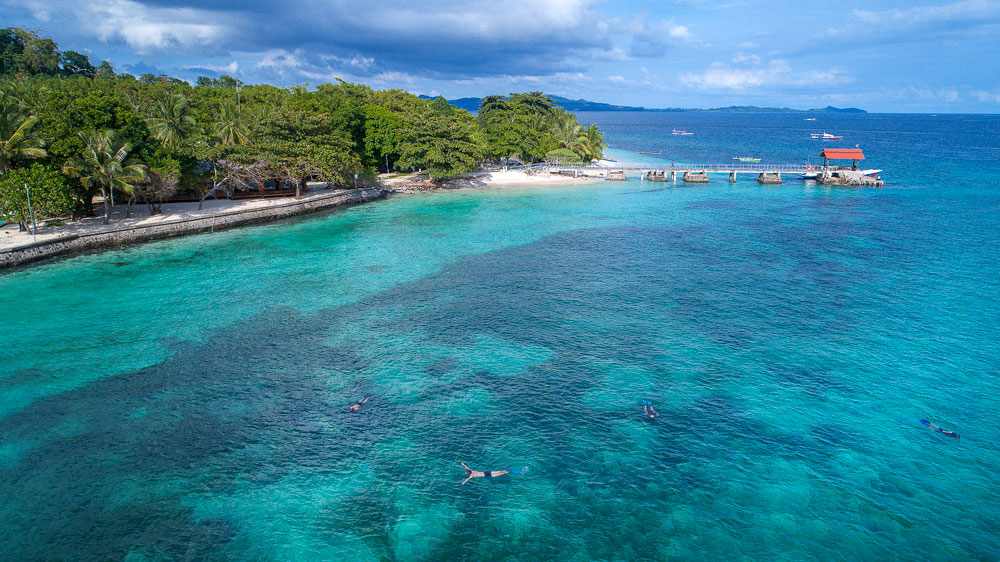
Overlooking these scenes from elegantly furnished and air-conditioned wooden bungalows only adds to its appeal. The Gangga Island Resort’s accommodations were built under the cooling shade of palm trees and surrounded by tropical gardens that lead onto the beach.
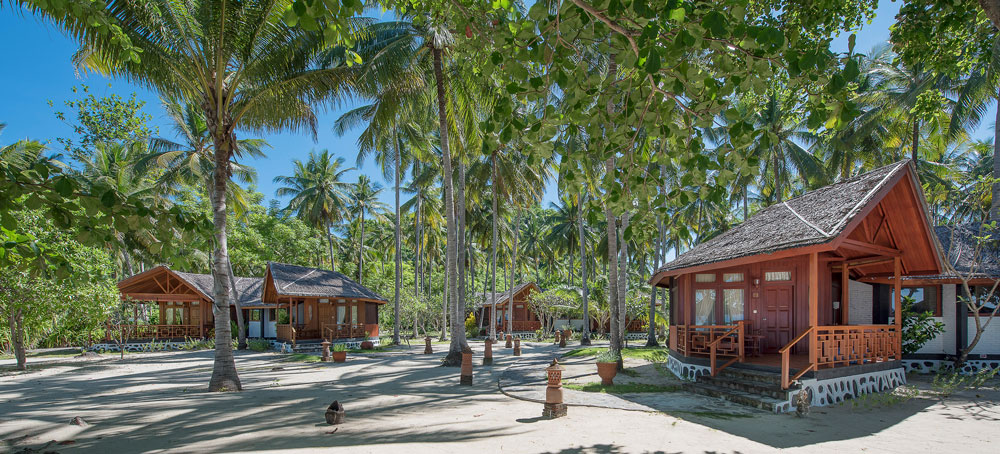
Peaceful and relaxing quarters are only the beginning for Gangga holidaymakers, honeymooners, and diving enthusiasts. A saltwater swimming pool, Tuturuga Restaurant (featuring local cuisine), coconut bar, Pasung Spa, and a boutique are on-site for convenient luxury. The all-inclusive resort is made for tranquility. You never have to go far to be immersed in nature and indulge in something extraordinary. The Gangga Resort has the highest international standards of service and comfort, with a warm staff that is eager to meet your needs and show you the pride of the island.
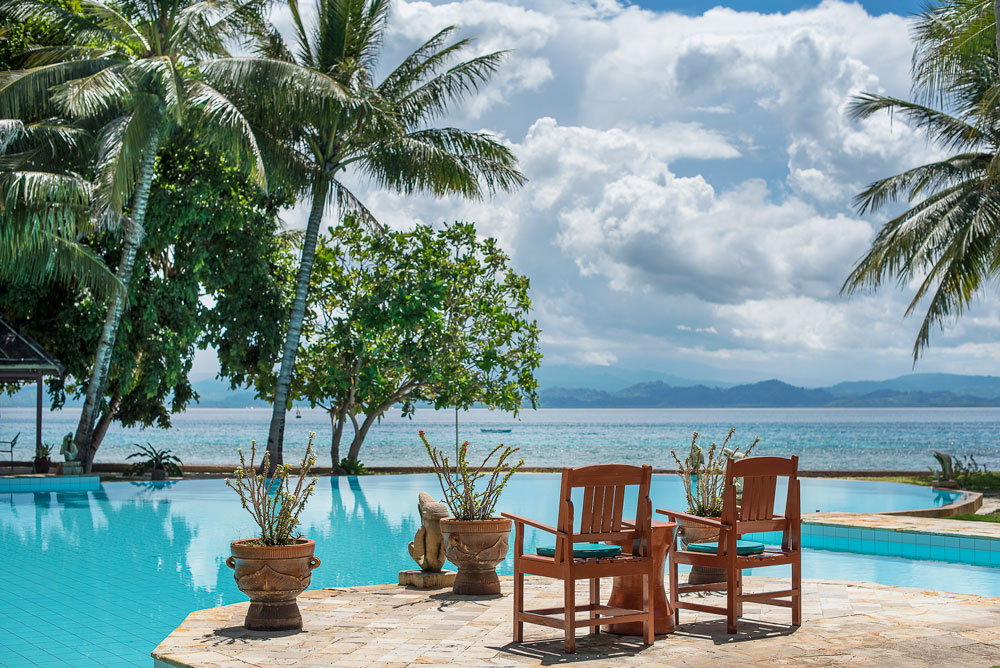
Scuba Diving At Gangga
Let’s get down to brass tacks: the Gangga Island Resort has premier scuba diving faculties for the most ambitious divers. The resort has access to over 30 world-class diving locations with rare species and immaculate reefs. It is known as an ideal starting point for diving the Bangka Archipelago, Bunaken National Marine Park, and Lembeh Strait.
Customized Scuba Features
The Gangga Island Resort does the most it can to optimize the time you spend diving and the time you spend not diving. It has a classroom and a meeting/reading room to prep for your dive or debrief post-dive. For marine photographers or aspiring gurus, there’s a library full of marine books and a photo room with working tables to continue honing your artistic abilities. With the amount of unusual yet cosmic-looking microorganisms in the area, this room is a marine photographer’s dream for editing and organizing your day or night dive shots. Lockers with charging outlets from 220-110 Volts are available for your professional cameras.
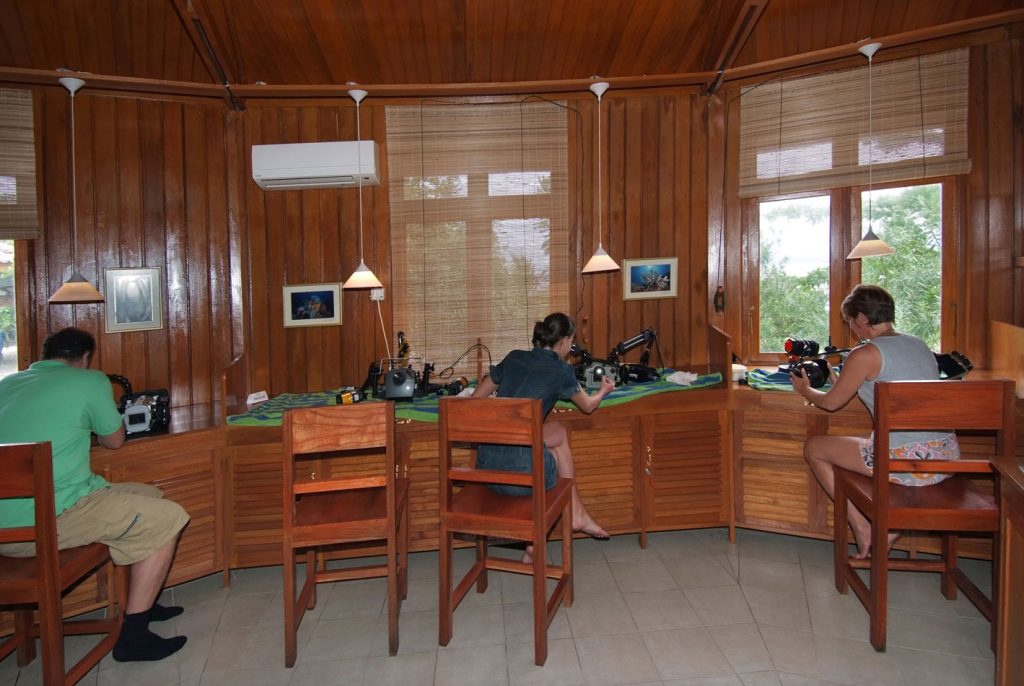
Visitors can rent new or well-maintained equipment by Aqualung, along with access to Nitrox 32% free of charge and three well-aerated Coltri Compressors for safe air. The resort also makes sure to keep 12 & 15 Liter Aluminum tanks, plus valves and adaptors INT and DIN on hand. All the necessities to complete a dive to your standards are immediately within reach.
When Are The Best Times to Dive?
The particularly great thing about the location of the Gangga resort is its climate. North Sulawesi straddles the equator, and thus has a tropical, equatorial climate. This climate is divided into wet and dry seasons: the dry season is from July to October, and the wet season is from November to June. As expected, torrential rains are characteristic to the wet season. However, it’s not uncommon for wet season in the Gangga Island Resort to consist of brief downpours followed by extended periods of sunshine. This is unlike other parts of Asia that experience persistent rain the entire season. If you’re willing to risk minor rain spells in exchange for a tropical holiday this winter, the Gangga Resort is a great option.
Water temperature is also an important aspect of a good dive. The seas are also rougher because of the rain. Visibility is higher (up to 35 meters) when the water is cooler, typically from October to December.
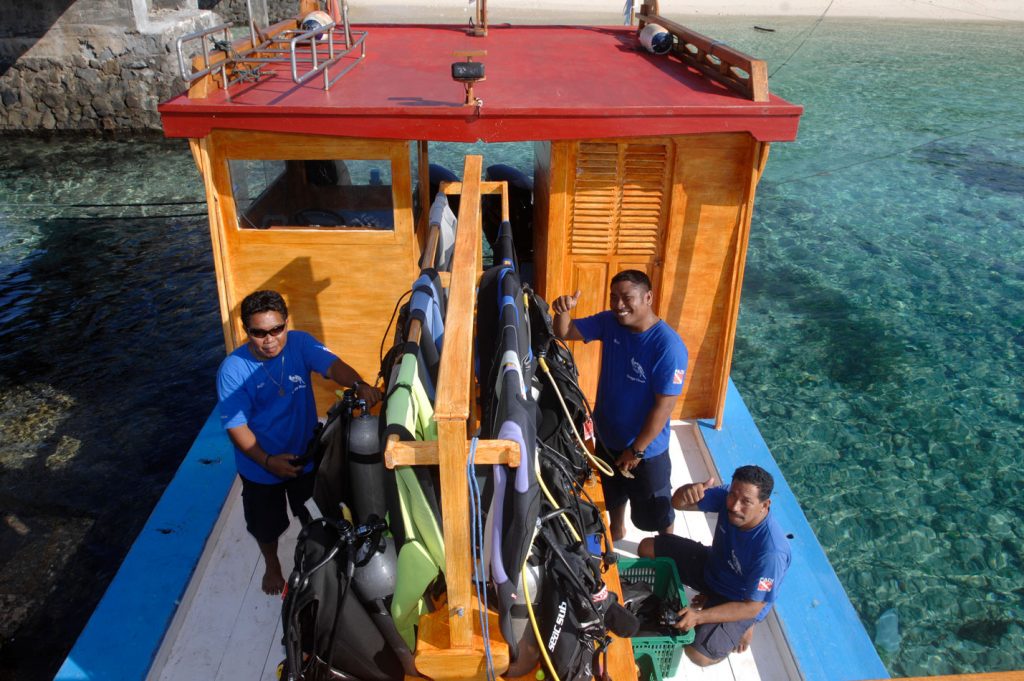
Marine Life
Of course, the “pièce de résistance” of the Gangga Island Resort is the diversity of its marine life.
Bangka Archipelago
The Bangka Archipelago, as we previously mentioned, is famous for its incredible muck diving. If you dive this site at night, the volcanic reefs are covered with soft corals, table corals, and sponges. Also habitual to this area are shrimps and lobsters, cuttlefish, octopus, and several species of scorpionfish, pipefish, and frogfish that are extremely fun to capture on film.
Bunaken National Marine Park
One of the most notable diving locations in the area accessible via Gangga Island Resort is Bunaken National Marine Park. Established in 1991, this is one of Indonesia’s first marine parks that has actively preserved the bountiful amount of wildlife that covers 20 diving locations.
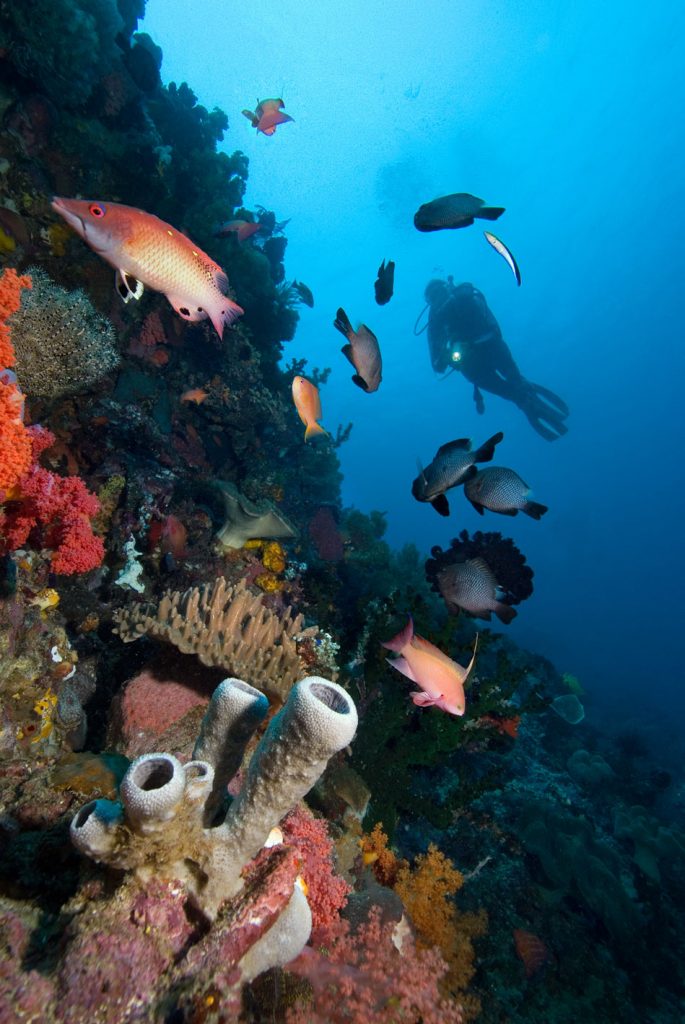
The park’s 20 diving locations range from shallow coral gardens to walls that at times drop to over 1000 meters. The area’s nutrient-rich waters and consistent currents are perfect for the over 300 species of coral and 1500 species of fish. Visibility is also high at 35-40 meters, supplying ample opportunity to catch critters up close. You can expect to see everything from large sea turtles, reef sharks, huge dogtooth tuna, pygmy seahorses, and every kind of macro life you can think of. You might even see a kind of “Rhinopias,” a fish in the scorpionfish family that uses its camouflage to disguise itself among the coral as protection from predators. Because they’re so difficult to spot, they’re considered the “Holy Grail” for photographers.
